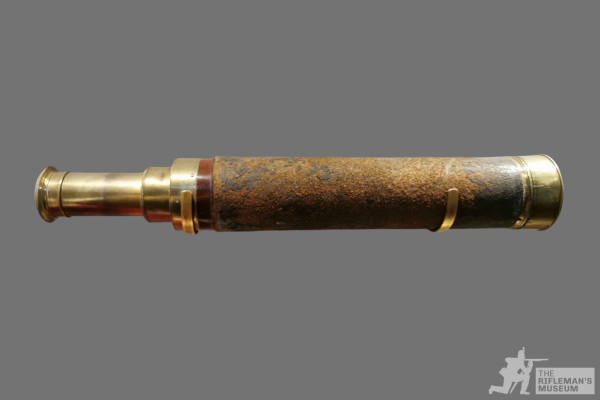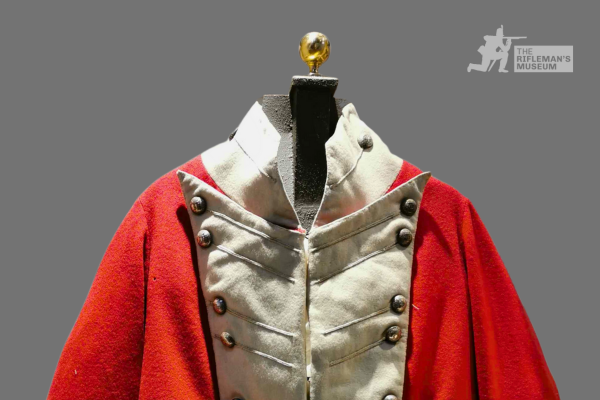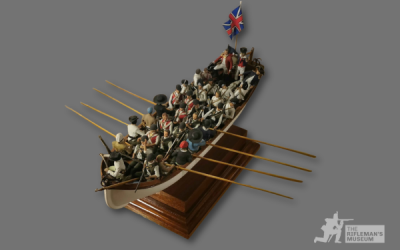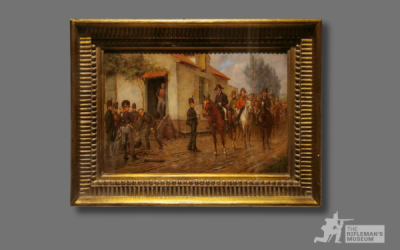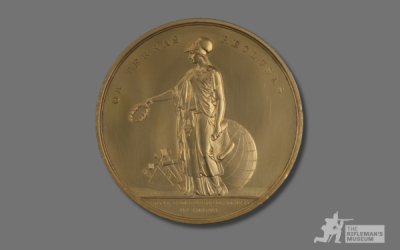Item details: An achromatic, two draw telescope with lens cap. Brass with a mahogany barrel under a leather cover. Near the eyepiece is the maker’s engraving ‘Berge late Ramsden, London’, and engraved at the base of the barrel is the name ‘Maj. Gen. Paget’, most likely referring to General Sir Edward Paget. The connection is unknown.
This telescope reportedly belonged to Lieutenant-Colonel John Hunt of the 52nd (Oxfordshire) Regiment of Foot (Light Infantry), coming to the Museum along with several other of his belongings.
About the item
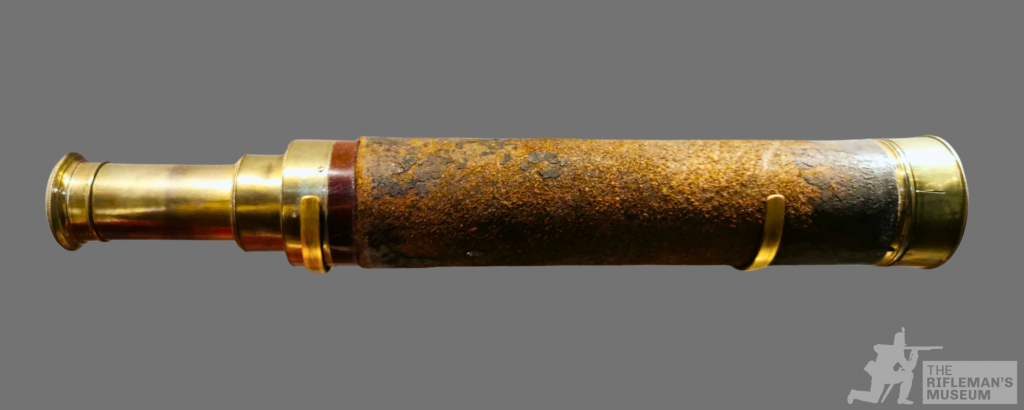
The telescope was standard equipment for an officer of the period. A letter of Lieutenant Charles Booth to his brother Thomas notes the cost of a telescope as £3 (approximately £225 in today’s money), and states:
“It is an order from General Moore that everyone shall have them for distinguishing the different signals on the coast.”
—Lieutenant Charles Booth, Letter dated 1805
The telescope comes from the workshop of Matthew Berge, who took over the business of the renowned scientific instrument maker Jesse Ramsden, who as also the inventor of the achromatic eyepiece, which limits chromatic aberration and allowed a greater distance between the lens and the eye.
Berge marked his telescopes ‘Late Ramsden’ for only a short time between 1801 and 1805, immediately after taking over the business, which allows us to date the manufacture of the telescope to within this period.
While the telescope is engraved with “Maj. Gen. Paget,” it may nonetheless have belonged to Lieutenant-Colonel Hunt, perhaps given as a gift or inherited in some other way, particularly as Paget and Hunt served together in Sicily, Sweden, and Portugal.
About Lieutenant-Colonel John Hunt
John Hunt entered the 52nd Regiment in 1799 and enjoyed a long and active career across many campaigns of the Napoleonic Wars. He first served in the expedition to Ferrol and against Cádiz in 1800, and in Sicily in 1806, where he became aide-de-camp to Sir John Moore. Hunt accompanied Moore to Sweden in 1808 and later to Portugal, taking part in the retreat from Astorga to Vigo during the Corunna campaign.
In 1809 he joined the Walcheren Expedition and in 1811 re-embarked with the 52nd for the Peninsular War. He fought at Sabugal and Fuentes d’Onor, and in every major engagement of the 2nd Battalion. By 1812, he was in command of the 1st Battalion at the siege and assault of Badajoz, and later assumed command of the 2nd Brigade of the Light Division. Throughout that campaign he led his men at the Battle of Salamanca and in a series of hard-fought actions that followed.
Compelled by ill health to return home in 1813, Hunt later rejoined the regiment in the Pyrenees and took part in the repulse of Marshal Soult’s columns. That same year, during the storming of San Sebastián on 31 August 1813, he commanded the volunteers of the Light Division in the assault on the fortress. Advancing through the breached walls under heavy fire, Hunt was twice severely wounded—one of the wounds leaving him permanently lamed after a musket ball lodged beneath his left knee. He recorded the incident in his Peninsular War Diary:
“On reaching the summit, I found myself only with about ten of my men, the rest including Captain R[obert] Campbell, Lieutenant Harvest, O’Connell 43rd &c were either killed or disabled… At length while in the act of taking hold of the colour of a Portuguese regiment with one hand and stepping over the crest of the breach, I received a ball under my left knee which knocked me completely over and put an end to all further exertion on my part.”
—Peninsular War Diary of Lieutenant-Colonel John Hunt
Despite his injuries, his leadership during the attack was widely admired.
For his distinguished service, Hunt received three medals and was made a Companion of the Order of the Bath (CB). He later held several staff appointments at home before his death in 1857.

